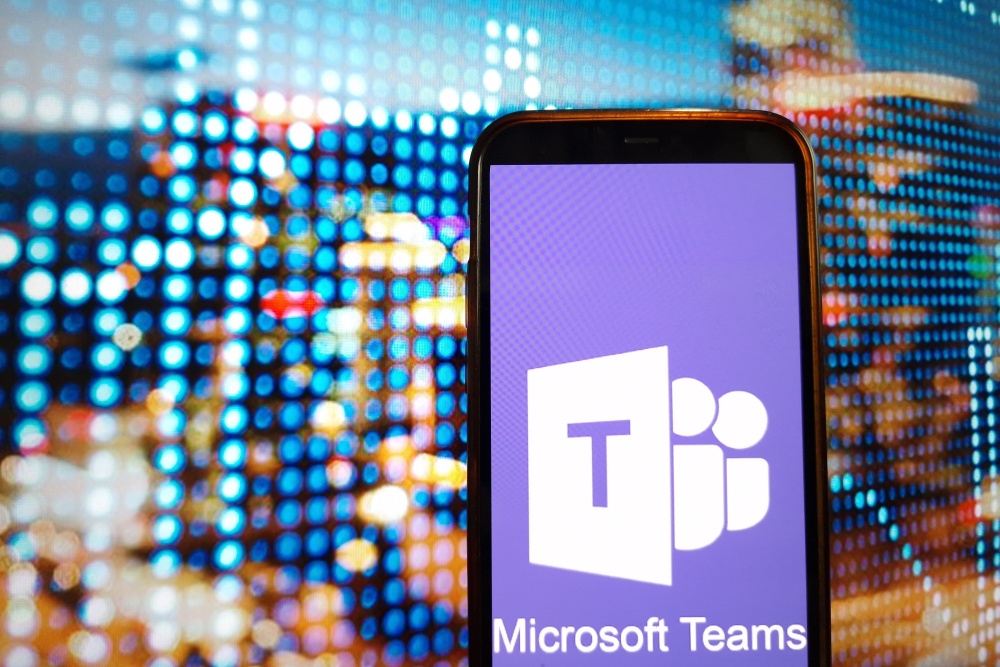Over the past year, remote meetings have become so commonplace that they are sure to continue to some degree, even once most of us are back in our offices. But unlike in-person meetings where it is usually pretty obvious who is not fully engaged (the woman tapping away on her cell phone the entire time; the guy with the vacant stare that makes that you wonder if he’s learned to sleep with his eyes open), it’s not as easy to tell during video-based meetings. So if you haven’t already figured out through trial-and-error what works in terms of keep everyone actively involved, here are some tips to help you boost engagement in Teams meetings moving forward.
All Together Now
Thanks to Microsoft’s introduction of Together Mode towards the end of last year, we can now see up to 49 of our meeting participants faces as if we are all sitting in the same room. Using AI segmentation technology, the live webcam footage of each participant’s face is digitally placed in a shared background. Now it feels like you really are all in a meeting together, sharing ideas, reacting to each other’s comments with smiles, waving “hello” or perhaps giving a real thumbs-up and not just the virtual one we have all gotten so used to. Not only do the participants benefit from the visual interaction, but so too does the meeting host. As host, you may now be able to see whether the audience is losing interest or focus, and make the necessary adjustments.
Cameras On!
Regardless of whether or not you are using Together Mode, it is a good idea to ask that all participants have their cameras turned on. Obviously exceptions can be made in certain circumstances, but being able to see each and every person’s live reactions is helpful for the group as a whole to maintain a true sense of connection during the meeting.
Use Breakout Rooms
For larger meetings, consider using breakout rooms. This allows for smaller group discussions that can help regain (or at least refocus) people’s attention. My colleague Dan Callahan recently wrote a post about taking advantage of breakout rooms; check it out here.
Allow Time for “Small Talk”
I imagine we all like meetings to be as short and focused as possible. Still, there is something to be said for creating an atmosphere of relaxed comradery before getting down to the nitty-gritty. Letting people “check in” with each other goes a long way toward generating a sense of appreciation for each other’s lives outside of the workplace, as well as a feeling of inclusion. So – at least in smaller meetings – try to allow for a few minutes of casual hellos and chit-chat among participants. If your meeting is more of the 100-person variety, perhaps arrange for a bit of personalized introduction at the beginning of smaller breakout room interaction.
Encourage Chat on the Side
Speaking of chatting, be sure to not just allow for but actively encourage the use of the chat feature during meetings. Let people ask questions and get them answered “on the side” (much as you would lean over to your neighbor in the conference room and ask “what did she just say?”) Not only does this foster active participation, but it helps to regain the focus of someone who may be confused by something they heard. (And often when one person is confused, they are not alone.) This side chat is also a great way to keep attendees actively engaged in the discussion.
Provide an Agenda, Meeting Notes & Recordings
These three organizational items help to structure your meeting in a way that is generally appreciated by attendees. By presenting an agenda via the Teams’ Meeting Notes tool at the beginning, they know what to expect from the get-go. Also use this tool to keep – or assign someone to keep – active, visible notes during the meeting. Finally, consider recording the meeting for later viewing by all attendees. There are multiple ways to do this, as outlined in this post. By doing those things, you can help attendees feel more relaxed, and they can be more “present” knowing that they can go back later to review anything they missed.
Consider Using Live Captions
This is an obvious option when you want to be inclusive to attendees who might be deaf or hard-of-hearing. But as many of us have learned during the pandemic, trying to focus on what is being said in a meeting while life goes on as normal around us can be challenging. The dog is barking. Your kids are arguing. Your partner’s cell phone is ringing. (I swear I told him to turn that thing to vibrate!) Anyway, by turning on live captions in Teams, you’ve just made it much easier for everyone to follow along and stay focused. You can read about how to turn on live captions, as well as some best practices here.
Mix it Up
One final tip is to use every tool at your disposal to keep your meetings lively and the participants actively engaged. Share the whiteboard during your meeting for a brainstorming session, allowing everyone to type (or draw) their ideas collaboratively. Use the polling feature to give a pop quiz (that’ll keep ‘em on their toes!) or conduct a survey. And keep in mind you can easily use both of these tools to introduce some fun and games into your meeting. This is probably the most meaningful tip for boosting engagement in Teams meetings; keep it upbeat, keep it fun!





0 Comments